
The Ediacaran period is a geological period of the Neoproterozoic era that spans 96 million years from the end of the Cryogenian period at 635 Mya, to the beginning of the Cambrian period at 538.8 Mya. It is the last period of the Proterozoic eon as well as the last of the so-called "Precambrian supereon", before the beginning of the subsequent Cambrian period marks the start of the Phanerozoic eon where recognizable fossil evidence of life becomes common.
The year 1957 in science and technology involved some significant events, listed below.

Charnia is an extinct genus of frond-like lifeforms belonging to the Ediacaran biota with segmented, leaf-like ridges branching alternately to the right and left from a zig-zag medial suture. The genus Charnia was named for Charnwood Forest in Leicestershire, England, where the first fossilised specimen was found. Charnia is significant because it was the first Precambrian fossil to be recognized as such.

The University of Leicester is a public research university based in Leicester, England. The main campus is south of the city centre, adjacent to Victoria Park. The university's predecessor, University College, Leicester, gained university status in 1957.

Bradgate Park is a public park in Charnwood Forest, in Leicestershire, England, northwest of Leicester. It covers 850 acres. The park lies between the villages of Newtown Linford, Anstey, Cropston, Woodhouse Eaves and Swithland. The River Lin runs through the park, flowing into Cropston Reservoir which was constructed on part of the park. To the north-east lies Swithland Wood. The park's two well known landmarks, Old John and the war memorial, both lie just above the 210 m (690 ft) contour. The park is part of the 399.3 hectare Bradgate Park and Cropston Reservoir Site of Special Scientific Interest, which has been designated under both biological and geological criteria.
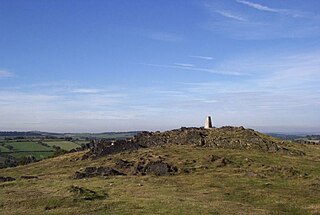
Charnwood Forest is a hilly tract in north-western Leicestershire, England, bounded by Leicester, Loughborough and Coalville. The area is undulating, rocky and picturesque, with barren areas. It also has some extensive tracts of woodland; its elevation is generally 600 feet (180 m) and upwards, the area exceeding this height being about 6,100 acres (25 km2). The highest point, Bardon Hill, is 912 feet (278 m). On its western flank lies an abandoned coalfield, with Coalville and other former mining villages, now being regenerated and replanted as part of the National Forest. The M1 motorway, between junctions 22 and 23, cuts through Charnwood Forest.
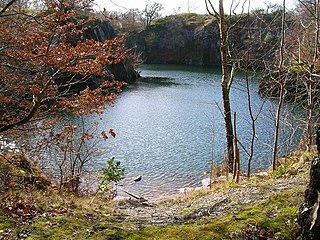
Swithland Wood and The Brand is a 87.9 hectares biological Site of Special Scientific Interest south of Woodhouse Eaves in Leicestershire. Swithland Wood is a Nature Conservation Review site, Grade II. The Brand is designated a Precambrian site in the Geological Conservation Review, but the dating has been changed due to the discovery of trace fossils from the succeeding Cambrian period.

Richard Alan Fortey is a British palaeontologist, natural historian, writer and television presenter, who served as president of the Geological Society of London for its bicentennial year of 2007.

The Leicester Museum & Art Gallery is a museum on New Walk in Leicester, England, not far from the city centre. It opened in 1849 as one of the first public museums in the United Kingdom. Leicester Museum & Art Gallery contains displays of science, history and art, both international and local. The original building was designed by Joseph Hansom, designer of the hansom cab. It has been expanded several times, most recently in 2011.
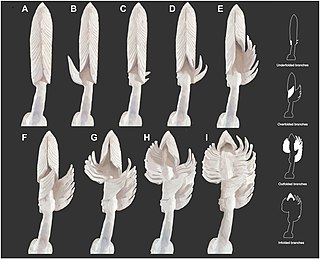
Charniodiscus is an Ediacaran fossil that in life was probably a stationary filter feeder that lived anchored to a sandy sea bed. The organism had a holdfast, stalk and frond. The holdfast was bulbous shaped, and the stalk was flexible. The frond was segmented and had a pointed tip. There were two growth forms: one with a short stem and a wide frond, and another with a long stalk, elevating a smaller frond about 50 centimetres (20 in) above the holdfast. While the organism superficially resembles the sea pens (cnidaria), it is probably not a crown-group animal.

Trevor David Ford was an English geologist and author, best known for publishing the first report on the Precambrian fossil Charnia masoni in 1958. In addition to paleontology, his wide-ranging research encompassed geomorphology, speleology, studies of minerals and mineralisation, and mining history, and mainly focused on the Peak District. His academic career was at the Department of Geology of the University of Leicester, where he rose to be a senior lecturer (1980–87) and associate dean for combined studies in science. He was the founding editor of the journal now entitled Cave and Karst Science (1973–93), and published many books, both academic texts and books aimed at a broader audience, including cave guides, and guides to geology and minerals.

The Ediacaranbiota is a taxonomic period classification that consists of all life forms that were present on Earth during the Ediacaran Period. These were enigmatic tubular and frond-shaped, mostly sessile, organisms. Trace fossils of these organisms have been found worldwide, and represent the earliest known complex multicellular organisms. The term "Ediacara biota" has received criticism from some scientists due to its alleged inconsistency, arbitrary exclusion of certain fossils, and inability to be precisely defined.

Vendiamorpha is a class of extinct animals within the Ediacaran phylum Proarticulata.
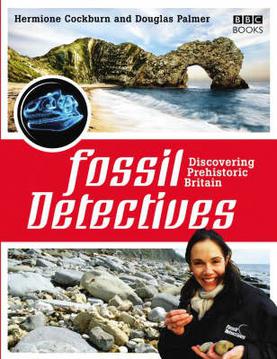
Fossil Detectives is a 2008 BBC Television documentary series in which presenter Hermione Cockburn travels across Great Britain exploring fossil sites and discovering the latest scientific developments in geology and palaeontology. The show is a spin-off of Coast.
"Precambrian rabbits" or "fossil rabbits in the Precambrian" are reported to have been among responses given by the biologist J. B. S. Haldane when asked what evidence could destroy his confidence in the theory of evolution and the field of study. The answers became popular imagery in debates about evolution and the scientific field of evolutionary biology in the 1990s. Many of Haldane's statements about his scientific research were popularized in his lifetime.
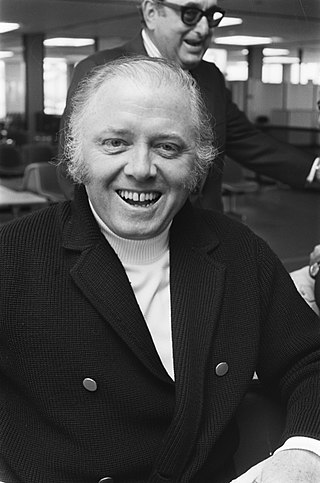
Richard Samuel Attenborough, Baron Attenborough, was an English actor, film director, and producer.

Until the late 1950s, the Precambrian was not believed to have hosted multicellular organisms. However, with radiometric dating techniques, it has been found that fossils initially found in the Ediacara Hills in Southern Australia date back to the late Precambrian. These fossils are body impressions of organisms shaped like disks, fronds and some with ribbon patterns that were most likely tentacles.
Wyggeston Grammar School for Boys was a grammar school in Leicester, England, in existence from 1876 to 1976.
Hylaecullulus fordi, also described as dumbbells, is an extinct species of Ediacaran petalonamid whose fossils were found in the Charnwood Forest of Leicestershire, England. It serves as an important rangeomorph because of its multifoliate anatomy. Its overall body plan is similar to that of a goblet, from which its name, Hylaecullulus, is derived from.














